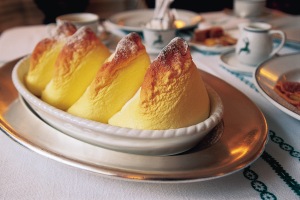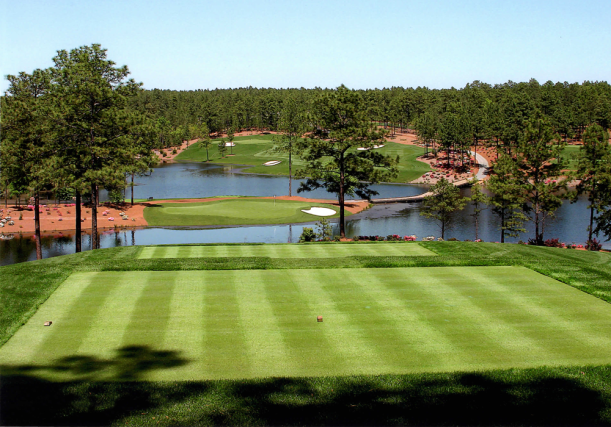
Set back from the shoreline’s beaches and sparkling waters are 14 exquisite layouts built by luminaries such as Jack Nicklaus, Tom Fazio, Greg Norman, Robert Trent Jones, Jr., and Davies Love III. With two courses on GOLF Magazine’s “Top 100 in the World” list and four of the top five courses in Mexico as ranked by Golf Digest, Los Cabos is considered the golf capital of Mexico.
I had the pleasure to meet Esteban Toledo, a multiple winner on the PGA Champions Tour and the official golf ambassador for the Los Cabos Tourism Board, at my last visit to Los Cabos. Attending Toledo´s golf clinic was fantastic but actually playing a few holes with the Mexican celebrity and Champions TOUR star – Toledo won the Champions Tour event at Pebble Beach in 2015 – was an unforgettable experience.
Toledo knows Cabo’s fantastic array of courses better than anybody else. He has played them all and raves about the beauty, challenge and variety of these world-class courses, which is second to none.
In an interview with my good friend Brian McCallen, former Senior Editor of GOLF Magazin, Toledo was asked to pick his favorite holes in Los Cabos and came up with a scintillating front nine. Comprised of three par 3’s, three par 4’s and three 5’s, each hole showcasing Cabo’s unique mountain-desert-ocean ecosystem.
“Not only does each hole present a compelling challenge, but taken together, I can’t think of a more scenic collection of golf holes anywhere in the world,” Toledo said. Yardages are listed from the back (championship) markers, though each hole has multiple sets of forward tees that give handicap players an appropriate test—and a fighting chance.
#1: Cabo del Sol (Ocean Course – No. 17) – Par 3 – 178 yards
One of the most dazzling par 3’s in the world. From the back set of markers, tee shots are played over a sandy cove to a perched green set atop a granite shelf fronted by scalloped bunkers, with the ocean crashing into the rocks on the right. The green is sizable but exposed to onshore breezes.
#2: Quivira No. 13 – Par 3 – 148 yards
A truly spectacular par 3. The tiny green at this breathtaking short hole crowns a massive pinnacle of granite that rises 150 feet from the foaming surf. There is a bail-out area to the left of the putting surface, but this hole requires a solid short-iron shot over a gaping abyss to the smallest target on the course.
#3: Puerto Los Cabos (Marina – No. 15) – Par 3 – 216 yards
Set on a bluff directly above the Sea of Cortes, this solid par 3 on the Marina Course at Puerto Los Cabos is one of the toughest one-shotters in town from the back tees. The subtly contoured green, flanked by bunkers, is half-hidden among the windswept dunes and can be very elusive.
#4: Palmilla (Mountain – No. 5) – Par 4 – 401 yards
From a hilltop platform, the tee shot at this dramatic par 4 is a forced carry over a deep arroyo to a long, sinuous fairway that looks like a green island floating in the blue sky. The approach shot is played to a sunken green fronted by a dry river bed and defended by a pair of deep sand pits. It’s the No. 1 handicap hole, and deserves to be.
#5: Cabo del Sol (Desert – No. 18) – Par 4 – 427 yards
At this picturesque closing hole, with the Sea of Cortes on the horizon, a meandering creek tumbles along the left side of fairway before crossing in front of the putting surface and spilling into a lake that guards the right side of the green. Based on pin placement, the large, undulating green can be very tricky.
#6: Cabo Real – No. 14 – Par 4 – 454 yards
With a fairway that tiptoes along the rim of a steep canyon and a green set beside a precipice at the layout’s highest point (460 feet above sea level), this challenging par 4, like most of the holes on Cabo Real’s back nine, is chiseled into desert foothills below rugged mountain peaks. A very firm test.
#7: Club Campestre – No. 7 – Par 5 – 541 yards
Tumbling down rolling foothills in the Sierra del la Laguna Mountains, Campestre’s signature hole is the risk-reward par 5 seventh, a Z-shaped double-dogleg that plays to a well-bunkered peninsula green that juts into a pond. This hole can be played boldly or conservatively but never easily.
#8: Cabo San Lucas CC – No. 7 – Par 5 – 610 yards
This club’s parkland-style layout, the only golf course in Los Cabos with a view of the iconic sea arch at Land’s End, boasts the double-dogleg par-5 seventh, which swings around a lake and stretches to 610 yards from the back tees. It ranks among the longest and most challenging holes in all of Mexico.
#9: Diamante (Dunes – No. 17) – Par 5 – 588 yards
This sturdy par 5 is a true three-shot hole that heads inland from the sea and usually plays downwind. Players must hit their tee shots over a broad arroyo to find a preferred landing area. An accurate lay-up is followed by a lofted approach shot to a shelf-like green perched 50 feet above the fairway.
If you have not had the chance to experience any of Cabo´s magnificent courses yet, put this awesome destination on your bucket list. You will surely be impressed by the quality and diversity of these golf experiences on offer at the tip of the southern Baja California Peninsula.









